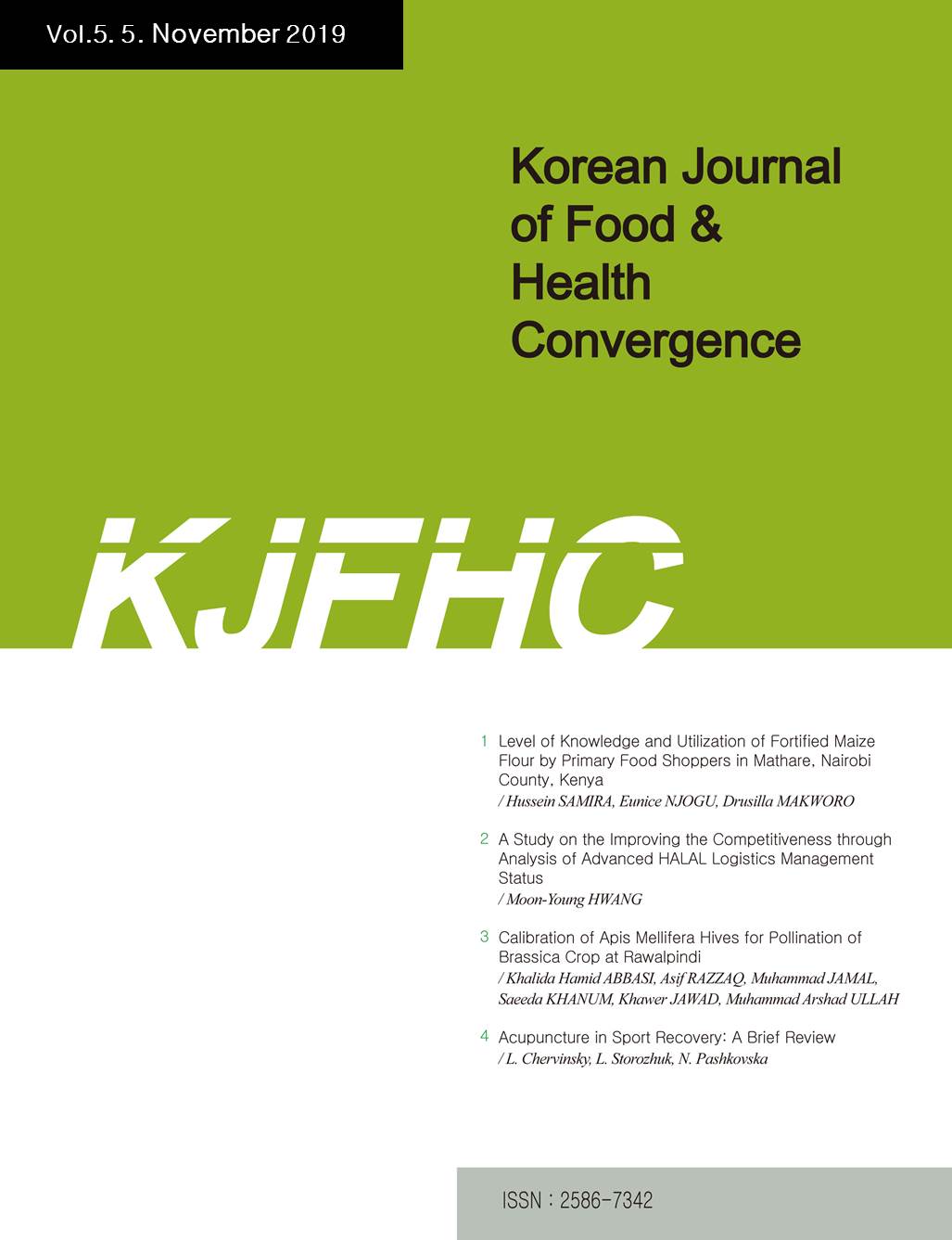 E-ISSN : 2586-7342
E-ISSN : 2586-7342
Vol.7 No.1
Abstract
The purpose of this study was to investigate the degree of recognition, perceived usefulness, and intention to accept the Internet of Things (IoT) in healthcare among nursing students, as well as to determine related factors. Through this study, we wanted to develop the basic research for the education related to the IoT in healthcare. In this study, data were collected from 348 nursing students using self-report online questionnaires, Naverform, and analyzed using the independent sample t-test, one-way analysis of variance, and Pearson correlation coefficients in SPSS version 26.0. The results of the study show that recognition of the IoT was correlated with its perceived usefulness (r=0.37; p<.001) and intention to accept the IoT (r=0.23 (p<.001). The strongest correlation was found between perceived usefulness of the IoT and intention to accept (r=0.67; p<.001). In conclusion, recognition of the IoT in healthcare affected its perceived usefulness, and a significant correlation was found between perceived usefulness of the IoT and intention to accept it. This study analyzed how much recognition, perceived usefulness, and intention to accept IoT in healthcare nursing students have. Based on these findings, we suggest that education related to the IoT in healthcare should be incorporated into the nursing curriculum.
Abstract
This study aims to empirically analyze the differences between groups of customers who prefer delivery food, which is rapidly growing amid the COVID-19 pandemic, and those who prefer the traditional practice of visiting offline restaurants. Based on the eating out lifestyle, participants were divided into three groups: participants who prefer food delivery, those who prefer to visit restaurants, and those who favor both. The comparison of differences between the groups was analyzed. A total of 215 questionnaires were distributed, and reliability and validity were verified with a sample of 201 copies, excluding 14 unreliable respondents. Then, a multivariate analysis of variance was used to compare the groups. The results showed that regarding offline restaurants, the group of customers who prefer to visit restaurants valued their atmosphere, while the customers who prefer delivery food valued the reputation of the restaurant. Regarding delivery-specialized restaurants, the group of customers who prefer delivery placed greater value on coupon events and payment convenience than other groups. The results revealed that the difference between the customers who prefer to visit restaurants and those who prefer delivery food was identified through empirical analysis, which provides strategic implications for catering companies and restaurant industries during COVID-19 in Korea.
Abstract
The purpose of this study was to develop strategies and policies for smoking prevention that are tailored to the characteristics of different groups of smokers. The structured survey was conducted with regular smokers. The results were as follows: It has been demonstrated that Risk Perception Attitude framework can be used as a major research framework to predict behavioral changes related to the prevention of smoking. The smokers were divided into four attitude groups based on perceived risks and self-efficacy: indifference, proactive, avoidance, and responsive. The smoker groups showed significant differences in information seeking, information avoidance, prevention behavior and addiction degree. Especially, the difference in prevention behavior depended on the self-efficacy when the perceived risk level was high. Information avoidance was the lowest when the perceived risk level was high and the self-efficacy was low. Information seeking was lowest when the perceived risk level was low. When the level of self-efficacy was high, if the perceived risk level was high, prevention behavior was actively performed. Therefore, the self-efficacy was related to preventive behavior, and the perceived low-risk played a role in hindering information seeking. Smoking prevention strategies are important to raise awareness of the risk of smoking and to improve the positive willingness of smokers to quit smoking through self-efficacy.
